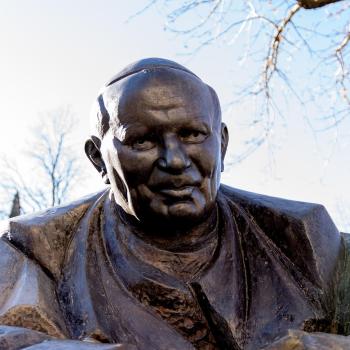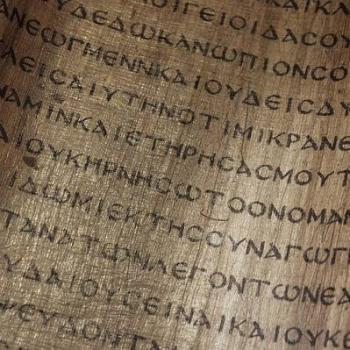THE RELIGION GUY observes that the wording of the perennial question above is the title of an important new book by Michael Licona of Houston Baptist University and published by the prestigious Oxford University Press.
Variations among the four New Testament Gospels in parallel accounts of the same events and sayings are fascinating for scholars. And they can perplex believers, though most involve details that don’t affect the main teaching or are easily explained in Bible commentaries.
Meanwhile, those who seek to deride the Scriptures and thus the Christian tradition emphasize these differences, calling them “contradictions” and “mistakes.” In reality, there are fewer such puzzlers than skeptics imply, yet more of them than believers might admit.
Licona’s research on this is deemed “significant” by Dale Allison of Princeton Theological Seminary, “illuminating” by Richard Bauckham of the University of St. Andrews, and “exemplary” by Christopher Pelling of Oxford University.
In his scenario, the Gospel writers or editors followed a flexible process that was commonplace in ancient times but doesn’t always fit present-day historiography (history-writing): “Ancient biographical conventions provided authors a license to depart from the degree of precision in reporting that many of us moderns prefer.”
One foundation for this theory is “What Are The Gospels?” (1992) by Richard Burridge, dean of King’s College, London. He overturned liberal thinking to make the case that the Gospels were meant as history, not mythology, and fit within the genre of biographies in ancient Greece and Rome. (Burridge’s importance is explained at https://www.firstthings.comarticle/2014/01/richard-burridges-achievement).
Licona’s research involved writing techniques from seven ancient rhetoric textbooks that have survived, one possibly dating from the 1st Century when the Gospels were written, and then 36 illustrative passages from Plutarch’s “Lives,” celebrated Roman biographies written in subsequent decades.
He observes that ancient biographers might paraphrase texts, omit or expand points, substitute synonyms, shift from singular to plural or vice versa, turn a speech into a dialogue, change a question into a statement, narrate the same story differently depending on context, transfer words from one speaker to another, change the order of events, or round off numbers. The results were “generally accurate” but “not technically precise.”
The writer’s purpose was “to tell a story in a manner that entertained, provided moral guidance, emphasized points they regarded as important, and paint a portrait of important people. If they had to adapt some details on occasion, it was permissible,” Licona concludes, not “to distort the truth but to communicate it more effectively.”
Then Licona’s book closely examines 19 parallel texts from the Gospels to analyze ways these factors were sometimes used. For instance, here are proposals regarding the four Gospels’ accounts of Jesus’ crucifixion and death:
John may have altered the date and time of the crucifixion to symbolize its sacrificial aspect, was not interested in naming every witness at the cross, may have edited some literal words of Jesus while retaining their meaning, and “sometimes adds theological flavorng.” Luke in one instance seemed to reverse the order of events, and in another either displaced an event or other Gospels altered certain details. Matthew substituted one word to allude to Psalm 68. With certain verses, “paraphrasing and/or imprecise memory or reporting” created different wordings.
Another example is which women were witnesses to Jesus’ crucifixion, burial, and the empty tomb on Easter day. No two Gospels are exactly the same on this. For instance, only Mark names Salome at the cross and the tomb, and only Luke places Joanna at the tomb. Three Gospels say women attended the burial but John mentions none. And so forth.
Licona says the Gospels sometimes mention women without their number or their names, some references may use a name variant for the same woman, and possibly each evangelist made a point of naming a woman who provided the testimony preserved in the narrative.
The author is a forthright conservative evangelical whose 2010 blockbuster “The Resurrection of Jesus: A New Historiographical Approach” (InterVarsity Press) applies modern historical methods in order to defend the truthfulness of Jesus’ resurrection from the dead. Nonetheless, Licona’s new book is unlikely to please or convince evangelicals who hold to a strict understanding of the Bible’s word-for-word “inerrancy” (freedom from errors).
Journalists know that interviews about the same event may emphasize or omit this or that aspect and disagree on details, yet the versions overlap so the main story is clear. That could be exactly what we find in the four Gospels. It’s obvious that various independent witnesses and strands of material were carefully preserved there because differences (or “contradictions”) were not artificially harmonized or edited out by the later church. To a news reporter like The Religion Guy, that only adds to the authenticity of the Gospel accounts.












